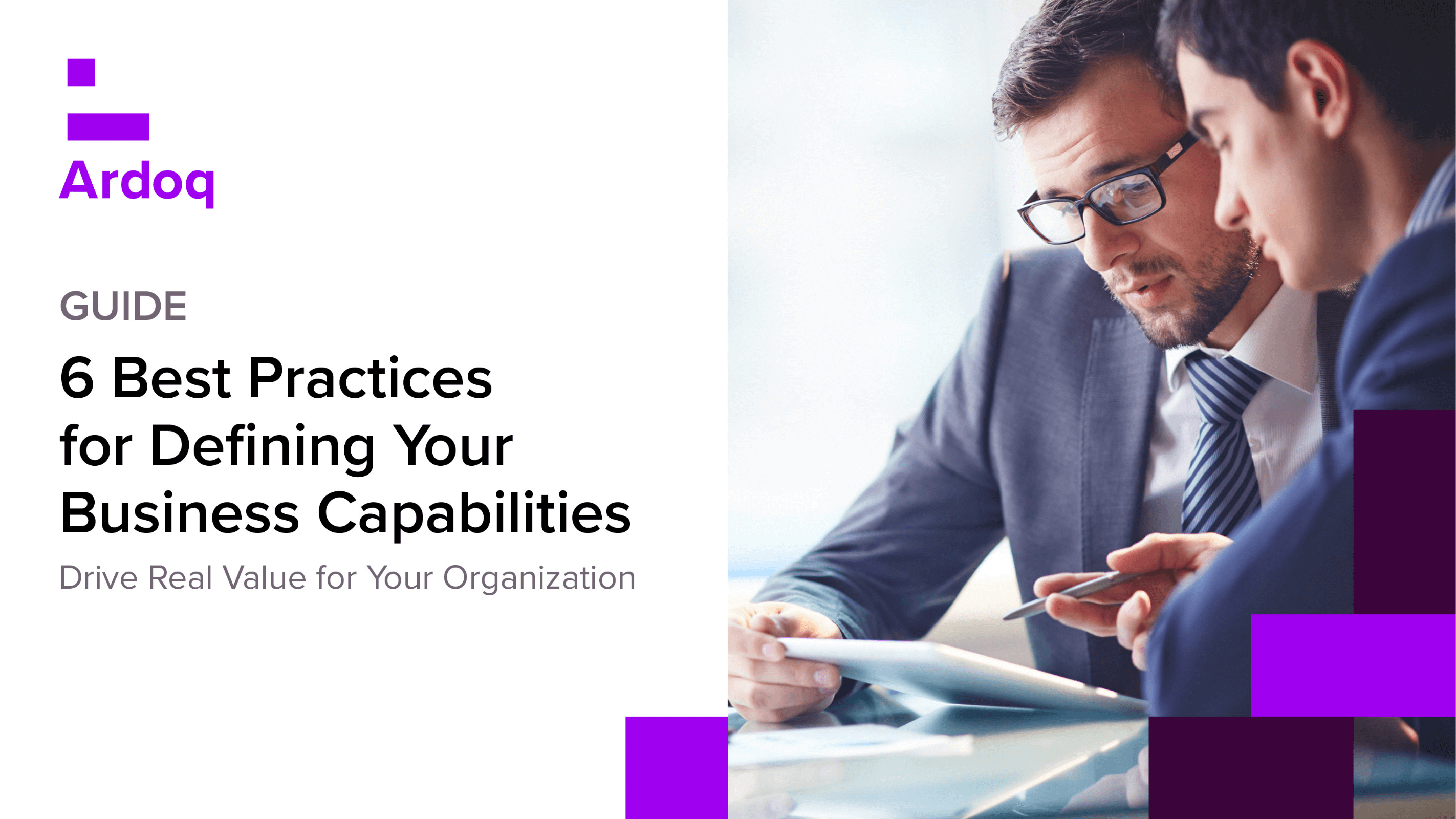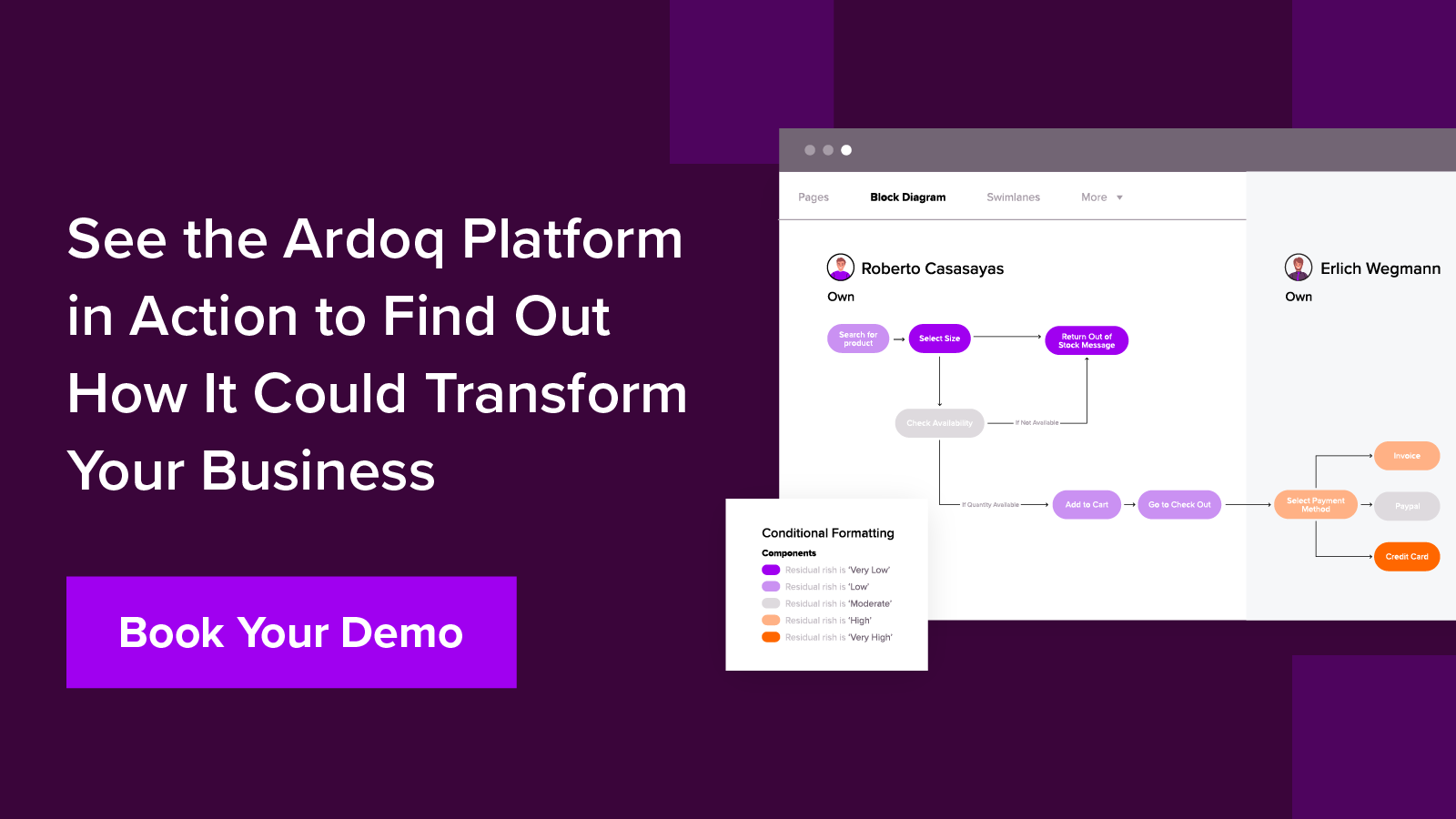Defining and modeling business capabilities can be a challenging conceptual exercise. Whether organizations are approaching this for the first time or trying to pinpoint how to do it better, this article will provide business capability examples to guide more effective modeling initiatives.
Understanding an organization in terms of its capabilities will help decision-makers gain better insight into operations and how to make strategy a reality. Modeling business capabilities provide valuable insight into how people, technology, and processes are connected to create value.
Jump to:
- How and Why Organizations Need To Define Business Capabilities
- 9 Business Capabilities Examples
- Best Practices For Defining Business Capabilities
- Assessing the Effectiveness of Business Capabilities
- Drive Innovation and Agility Through Business Capabilities
- FAQs About Business Capabilities
How and Why Organizations Need To Define Business Capabilities
Business capabilities are a powerful method for understanding not just where an organization is but also where it needs to be. The building blocks of an organization are a way of creating a common language to improve cross-departmental understanding of the business and a lens for creating answers to a host of critical business questions, including:
-
Where to invest in people and technology?
-
Where to manage business and technology risk better?
-
Where to drive innovation, and where to commoditize?
Before an organization can answer any of those pressing questions, it must define its capabilities and business capability model.
Defining a business’ capabilities provides important clarity about its true state, which may differ greatly from its assumed or perceived state.
Learn more about the importance and benefits of defining business capabilities: What are Business Capabilities?
9 Business Capabilities Examples
An organization’s primary operations comprise one or more value chains that create products and services. The capabilities that underpin those value chains are what Ardoq calls core capabilities. In effect, they are the main reason an organization exists.
The organization also needs the ability to run itself. These activities, such as recruitment and accounting, don’t directly create value for customers but are necessary for running an organization. These can be defined as an organization’s supporting capabilities.
Finally, an organization must also be aware of its own market, communities, and its performance within them. It needs the ability to set direction and plan and execute the changes to move it to where it wants to be. These are the organization’s strategic capabilities.
Below are examples of capabilities for each category using a bank as a reference organization:
Core Capabilities
1. Marketing Analysis: Market Analysis is a core capability that enables the bank to assess market trends, customer behaviors, and competitive dynamics, providing insights that inform strategic decision-making and drive targeted growth initiatives. This capability ensures the bank stays ahead of industry shifts and adapts its offerings to meet evolving customer needs.
2. Order Management: Order management is a core capability that allows the bank to process, track, and fulfill customer orders for financial products and services, ensuring seamless transactions and high customer satisfaction. This capability enhances operational efficiency and supports timely and accurate service delivery.
3. Risk Management: This is fundamental to a bank's survival. It involves identifying, assessing, and mitigating various forms of risk (credit, market, operational, etc.) to ensure the bank's financial stability and protect its assets.
Strategic Capabilities
4. Innovation Management: Innovation Management as a strategic capability empowers the bank to develop and implement new financial products, services, and processes, fostering a culture of continuous improvement and staying competitive in a rapidly evolving market. This capability drives the bank’s ability to meet emerging customer needs and capitalize on new opportunities.
5. Enterprise Architecture: Enterprise Architecture as a strategic capability enables the bank to align its technology and business strategies, ensuring that IT investments support business goals and drive operational efficiency. This capability provides a structured framework for managing complexity, optimizing resources, and facilitating agile responses to market changes.
6. Customer Relationship Management (CRM): Building strong customer relationships is vital in a competitive financial landscape. CRM involves strategies and technologies to manage and analyze customer interactions and data throughout the customer lifecycle. This capability aims to improve customer service, increase customer retention, and drive sales growth.
Supporting Capabilities
7. Financial Reporting: Financial Reporting as a supporting capability ensures the bank’s ability to accurately compile, analyze, and present financial data, meeting regulatory requirements and providing insights for informed decision-making. This capability underpins transparency, compliance, and strategic financial planning.
8. Facility Management: Facility management is a supporting capability that ensures the efficient operation and maintenance of the bank's physical assets, including branches and offices, creating a safe, secure, and productive environment for employees and customers. This capability supports the bank’s operational continuity and enhances customer experience.
9. Human Capital Management: A bank's success relies heavily on its employees. Human capital management encompasses activities related to attracting, developing, and retaining a skilled and motivated workforce. This includes recruitment, training, performance management, and compensation.
Best Practices For Defining Business Capabilities
Understanding how business capabilities are assembled is helpful regardless of whether an organization chooses to use one of Ardoq’s best practice models, an existing standard, or its own approach.
Here are just some of our best practices for defining a business capability model that drives real value for any organization. To get the full guide, download our 6 Best Practices for Defining Your Business Capabilities.
1: Define Business Capabilities by What Is Done, Not How It’s Done
Definitions are important ways of framing any exercise, so it might be a good idea to begin with clear definitions of what we mean when discussing business capabilities and a business capability model.
Business capabilities are a list of the activities an organization carries out or needs to be able to carry out to conduct its business. A business capability model is an abstract model of the business and its operations. Abstracted means that it describes what needs to be done without saying how these things are done in the business. When defining business capabilities, it is important to exclude all references to specific applications, technologies, business products or channels, people, vendors, or projects.
Why?
The separation of what the business can do and how it can do it is crucial for understanding transformation. The “what,” essentially an organization’s core business model, changes very slowly. The “how,” the processes, systems, and departments your organization uses to realize those business capabilities, will change much faster over time. By decoupling the “what” from the “how,” an organization can ensure the model’s ongoing relevance and maximize the insight it will get out of it.
At first, it may seem like valuable information is being discarded, but this information will be captured separately and linked back to the model later.
2: Divide Business Capabilities Between Core, Supporting and Strategic
As explained earlier in the article, with examples of business capabilities, capabilities can fall into one of three buckets depending on their role in the organization. Supporting capabilities are not more critical than strategic or core capabilities; they serve different and important purposes in an organization’s operations.
This simple separation of capabilities into core, supporting, and strategic divides the business capability model into manageable portions. This separation also enables business and IT planners to understand how investment in different business capabilities drives different outcomes for customers, employees, and sponsors or investors.

3: Center Business Capabilities on Information, Not Processes
Center business capabilities on information, but what does “information” refer to? Broadly, information can be categorized into three major types:
- Structured Information (e.g., customer account record in a database)
- Aggregated Information (e.g., sales trend analysis from business intelligence dashboard)
- Unstructured Content (e.g., press releases, training videos)
With this understanding of information, we can start to pull apart the key differences between business processes and capabilities and clear up this common area of confusion.
Assessing the Effectiveness of Business Capabilities
More than just defining and modeling capabilities is required to deliver real value. It’s just the first step in understanding the organization’s activities. From there, organizations should:
-
Define KPIs for given capabilities: Organizations should establish clear KPIs that align with the goals for each capability. These might include metrics related to efficiency, cost, customer satisfaction, or time-to-market.
-
Assess maturity: Part of business capability modeling is also to determine the maturity levels of various capabilities. This should be undertaken with capability experts within the organization. In the Ardoq solution, capabilities can be ranked from No Capability, which means it doesn’t exist in the organization, to Optimized Capability, the highest level, meaning the organization has reproducible, efficient, and continuously adaptive processes, processes, or skills to realize this capability.
-
Conduct regular performance reviews: Regularly review capability performance through feedback and metrics tracking. This could include internal input from employees as well as input from external sources such as customers. This helps identify gaps and areas for improvement.
-
Assess alignment with strategic goals: It is important to assess and ensure each capability’s relevance and role in contributing to the organization's overall strategic objectives. If a capability is not aligned with these goals, its effectiveness is likely limited. This connection may be less clear for supporting capabilities necessary for the organization's ongoing operations but not directly connected to value creation.
Drive Innovation and Agility Through Business Capabilities
Unlike technology platforms and organizational hierarchies, which may change rapidly, an organization's capability model is much less likely to change over time. The organization’s business capability model represents core truths about delivering and creating value. This means that the effort to define and model business capabilities will continue to deliver value in the long run.
The business capability examples illustrated here reference what is possible, but every organization’s instance and needs are unique. The important thing is to model what matters to your organization.
For more in-depth guidance on defining and modeling business capabilities, read our in-depth guide on the 6 Best Practices for Defining Your Business Capabilities.
The Ardoq platform also comes with prebuilt, expert-guided solutions for Business Capability Modeling and Business Capability Realization, which can help an organization with:
- Facilitating collaboration between business and IT to manage costs and risk better
- Understanding how the business operates in practice
- Clear documentation on who the experts are in the organization for key capabilities
FAQs About Business Capabilities
What is a Business Capability?
A business capability is a high-level definition of what activity an organization carries out or needs to be able to carry out to conduct its business.
Why are Business Capabilities Important?
Business capabilities are important because they provide a clear framework for understanding what an organization can do, separate from the technology or teams that these capabilities rely on. They guide strategic decision-making, help prioritize investments, and ensure alignment with business goals.
How Can an Organization Identify its Business Capabilities?
A business capability map can help an organization identify what it does, not how the activities are done. This abstraction is important to reflect the true core model of the business, ensuring the model will be relevant in the long term regardless of changes in technology or processes.
Can Business Capabilities Change Over Time?
Yes, business capabilities can change slowly as the organization adapts to market changes, technological advancements, or shifts in strategy. Continuous assessment and adaptation are crucial for maintaining relevance.
How Can Organizations Improve Their Business Capabilities?
Organizations can improve their business capabilities by investing in process optimization, employee training, and technology upgrades and regularly reviewing and updating their capability models to align with strategic goals.
 Edward Granger
With over 20 years of experience in the industry,
Ed Granger is at the forefront of driving innovation and has a strong belief that for EA to control Digital, it must be Digital.
Edward Granger
With over 20 years of experience in the industry,
Ed Granger is at the forefront of driving innovation and has a strong belief that for EA to control Digital, it must be Digital.







